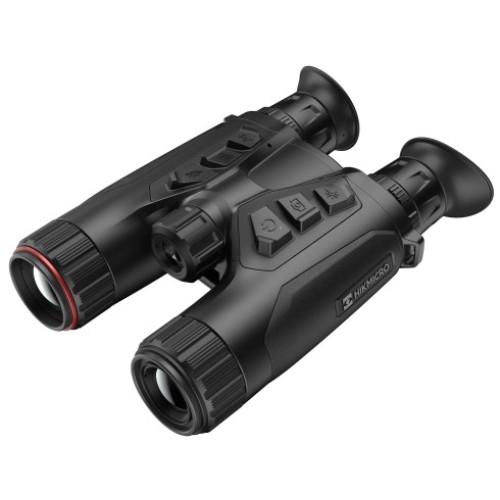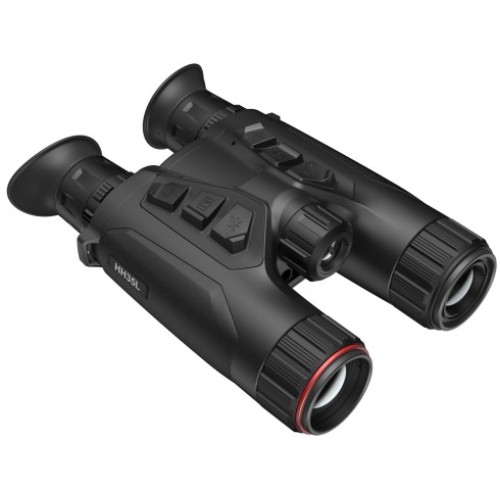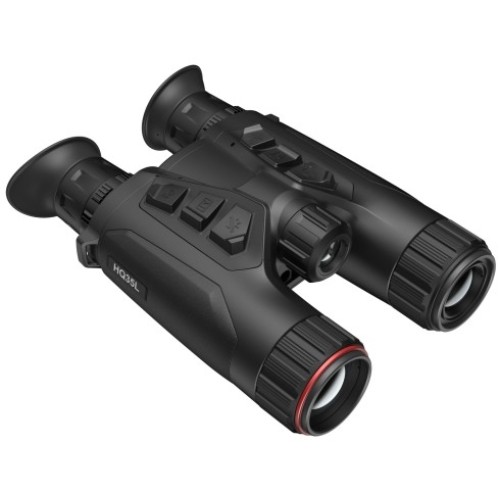Multispectral Devices
Multispectral devices are devices that can see in multiple spectrums, the most common of these being devices that are able to see in both the thermal and optical light spectrums. The advantage of multispectral devices is that they can be used to locate and identify what you are looking at much better than only utilising either thermal or optical technology on its own.
Thermal technology makes it much easier to locate items with a heat source such as animals and people but the amount of detail that is visible in the thermal spectrum is limited. This is where the optical channel comes in to play, once you have located what you were looking for using thermal technology, multispectral devices can be instantly swapped to the optical channel at the press of a button enabling the user to accurately identify what they have are looking at.
This technology is very useful to security persons who can easily identify persons and record them so they can better be identified which will potentially increase the chances of successful convictions or any further action being taken. It is also useful to all kinds of outdoor enthusiasts as it enables them to spot and study animals as never before learning more about their behaviour or enabling easier and accurate identification of sex and species, especially useful when trying to count for example a herd of deer, thermal technology does not pick up antlers but the optical channel does which makes it far easier to identify and count the number of males in a herd.
Thermal technology and the difference between devices can be a little difficult to understand online, it is much easier comparing units in the flesh which is why we advise prospective buyers pop in and look through them in person however there are several aspects that make up the difference in performance between different models and manufacturers. Each manufacturer has their own algorithm that converts the data collected by the thermal sensor into a picture so some models and manufacturers may show on paper that their device has a better sensor and screen than another but in reality the device with the lower specification sensor and screen actually offers a better clarity image and performance in the field. We also find that when a manufacturer is able to increase the performance of their algorithm they usually roll it out in the form of a product update to all of their devices still in warranty so all their compatible units old and new will benefit from this new found increase in performance.
One specification to look out for when comparing different models is the NETD value; the lower this number, the more sensitive the sensor, allowing lower changes in temperature to be detected resulting in a more detailed image. This is especially important in poor weather conditions where there is moisture, mist and fog in the air effectively clouding the reading of the thermal sensor as the temperature differences detected is effectively diluted by the lower temperature of the suspended water in the air limiting the distance and clarity offered by thermal technology in these conditions. The size of the thermal sensor is important as it gives an increased field of view and collects more data to be processed and shown to the user again for a more detailed image to help with identification. The Micron figure is effectively the space between each thermal pixel in the thermal sensor, if two thermal sensors have the same size ie. 640 x 512 but one has a lower micron value then the sensor with a lower micron value would send through more data points for a more complete thermal image which should result in a better definition image provided the algorithm can process this increased level of data quickly and the screen it is displayed upon to the user has sufficient resolution to display this data, this allows thermal binoculars to perform better at slightly higher magnification levels. Screen resolution is also important as there is no point in having the best thermal sensor and a brilliant algorithm if that data cannot then be displayed at its highest resolution to the end user.
If you have questions or would like any advice on picking the right multi-spectral device for you please call us and we can go through the advantages and disadvantages of the models you are interested in to find the right spotter for you.
Filters
Stock Status
In Stock
Out Of Stock
Manufacturer
HikMicro





 Back
Back



